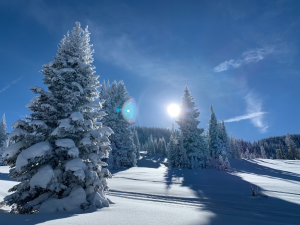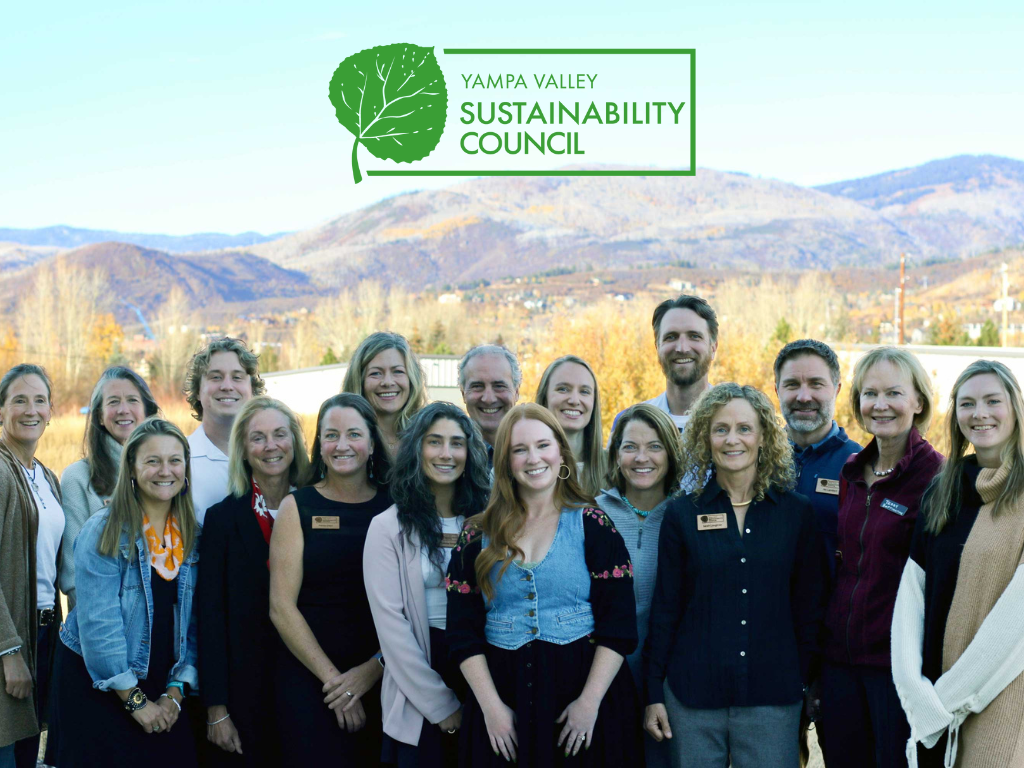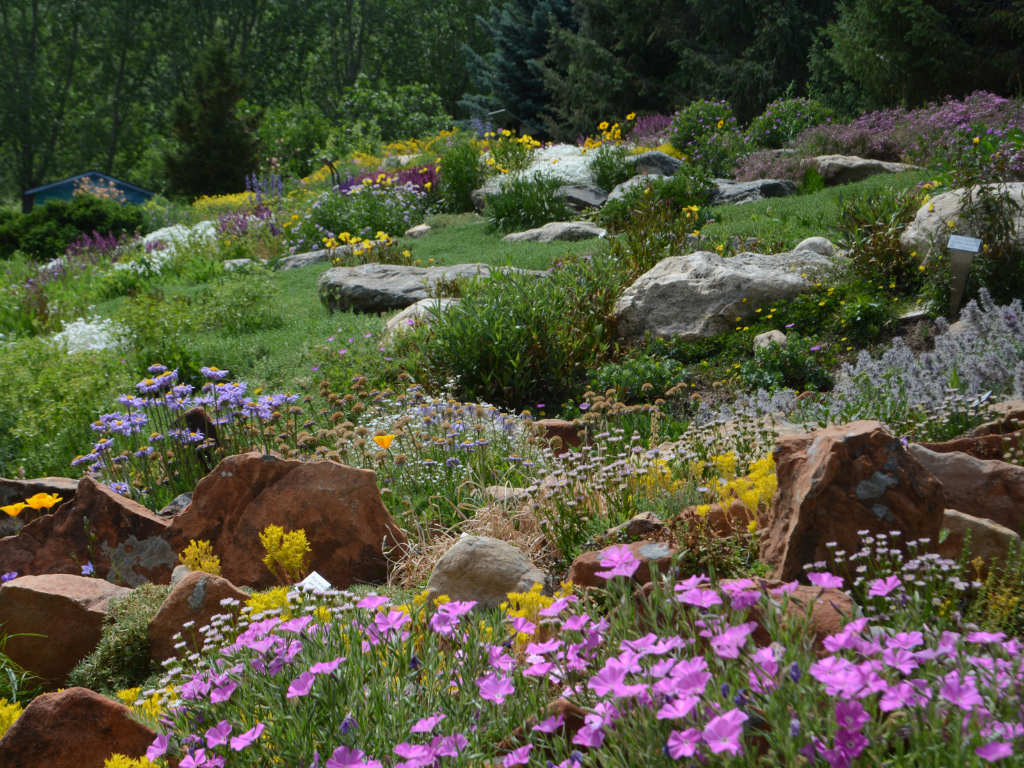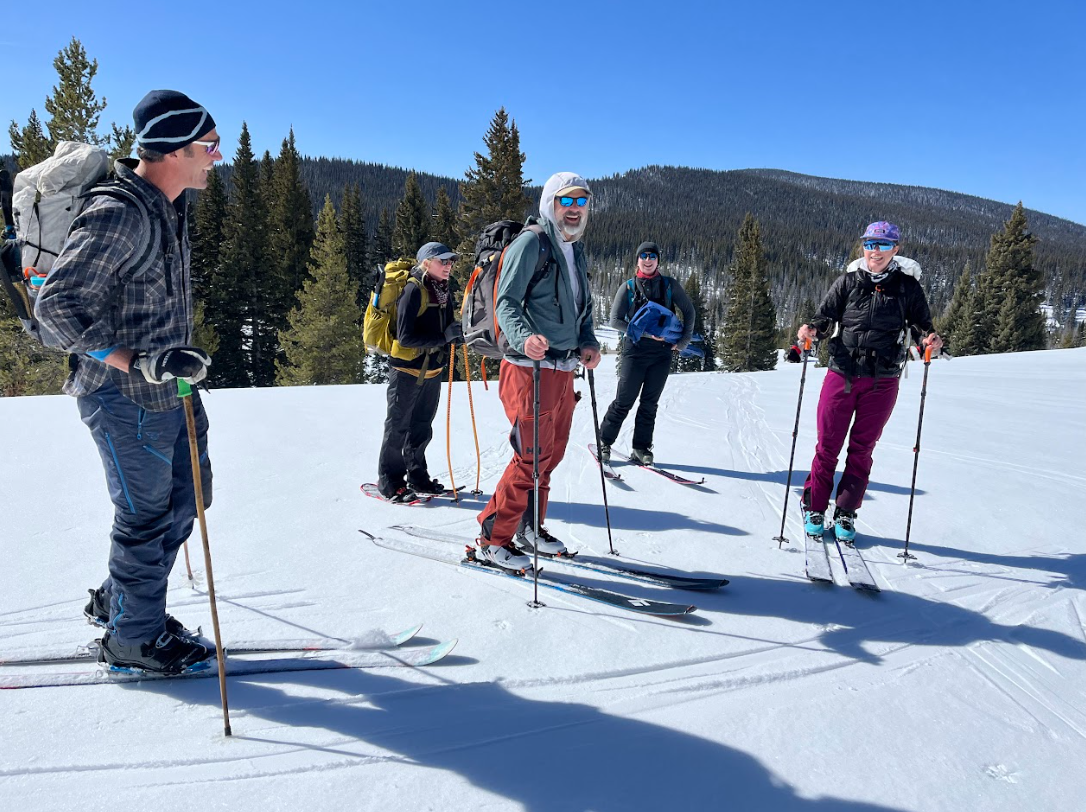Madison Muxworthy, Soil Moisture, Water, & Snow Program Manager | January 20, 2022
The much-needed and significant snowfall of late in the Yampa Valley has been particularly welcome after a dry and snowless November and early December. These productive storms spanned the last two weeks of December through the first week of  January and provided a substantial increase to our snowpack.
January and provided a substantial increase to our snowpack.
In the valley, we rely – in large portion – on snow for the generation of water. This annual process is one that community members are very attuned to. The Yampa River Basin is a snowmelt-driven watershed, meaning that our hydrology is driven by – and relies on – snowmelt to feed our rivers and streams causing peak flows in early summer. In Colorado, it has long been recognized that snow equals water. This is in large part true; however, it’s not a direct correlation. Things like how much water is stored in our soils (called soil moisture), dry vegetation, and dust on snow can all impact the relationship. We saw this exemplified in the early summer of 2021, eventually causing the third call to occur on the mainstem of the Yampa River. Soil moisture can be thought of as a sponge for this process; when the sponge (soil) is wet, snowmelt can run off into our waterways. When the sponge is dry, however, it soaks up the water causing less to end up in our rivers. If we look at last year’s snowpack and streamflow, we can see the impact of the deficit in soil moisture. In the Yampa River Basin, our snowpack was 90 percent of average, but our streamflows only amounted to 30 percent of average.
As we look ahead, projections are indicating further changes to our snowpack. A recent study found that mountains in the Western U.S. are expected to have a future of low-to-no-snow within the next 35 to 60 years. The study concluded the Rockies region, which includes Colorado, is projected to see a 20-30 percent loss in snowpack by 2050. These findings are concerning for water supplies in Colorado and especially the Yampa River Basin, as a snowmelt-driven watershed. It is estimated that snowmelt contributes up to 70-80 percent of the runoff in the Colorado River, making it the most important contributor to streamflow in the entire Colorado River Basin. Snowpack can be thought of as a natural reservoir, storing moisture until it is needed. When that natural reservoir has less to work with from the start, it means more stress for the remaining water that we do have.
The good news is that in the face of these challenges, we have solutions. As a community, we can take immediate and sustained actions to adapt to meet our current and future water challenges. Here are three ways to conserve water today. The first action is being mindful of the way we use our water supplies and limiting excess use. Another important action is to ensure efficiency; if your household has older water fixtures, consider replacing them with newer fixtures that are 20 percent more water-efficient. Thirdly, one of the largest uses of water is for outdoor watering of lawns and gardens, many of which are not appropriate for the Yampa Valley climate. Consider switching to climate-appropriate landscaping. We need to approach these challenges by recognizing that we will all have to do our part to work with less and be smarter with what we do use.






